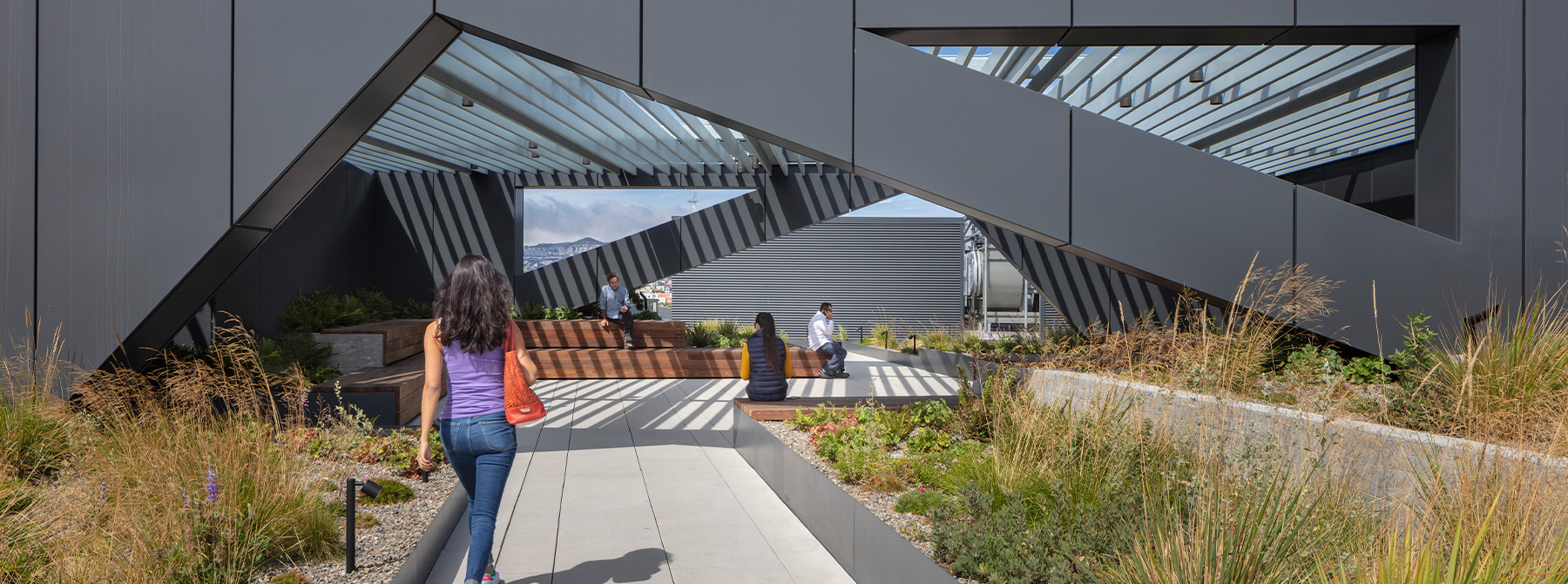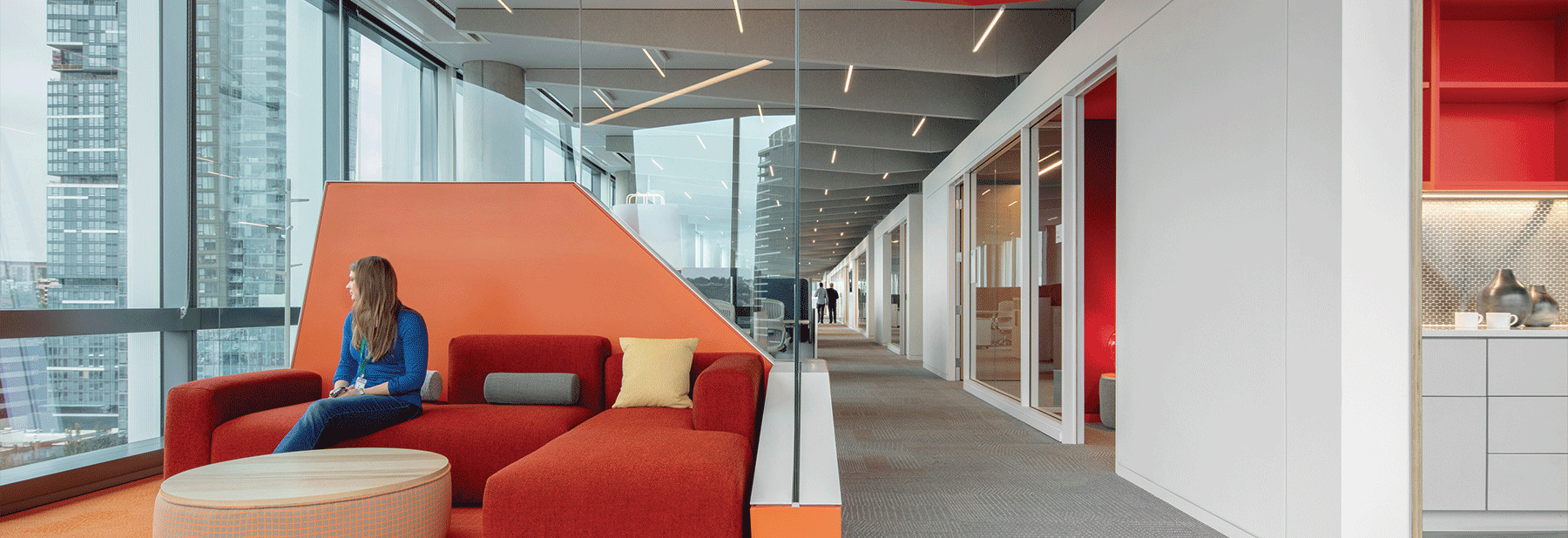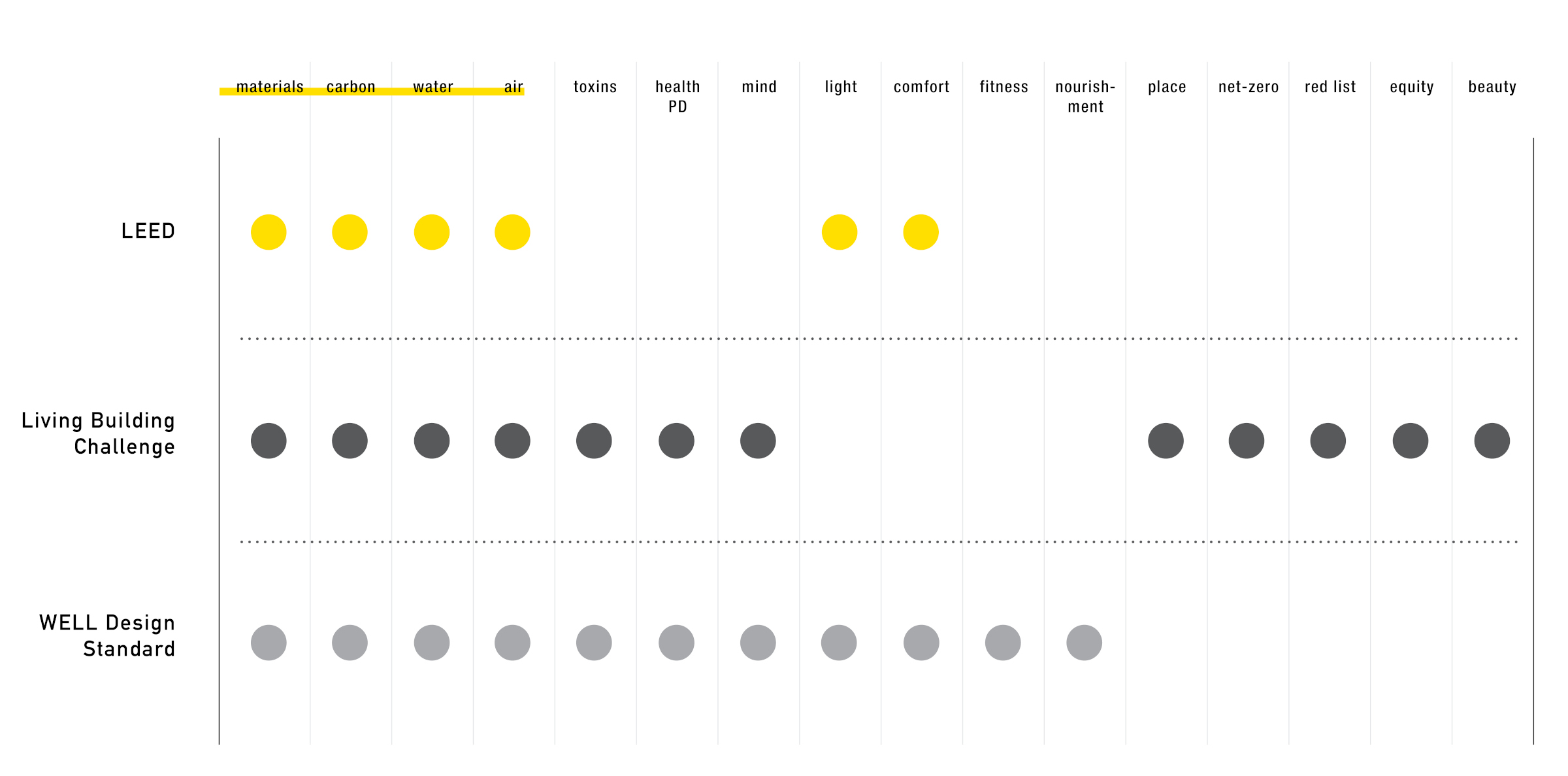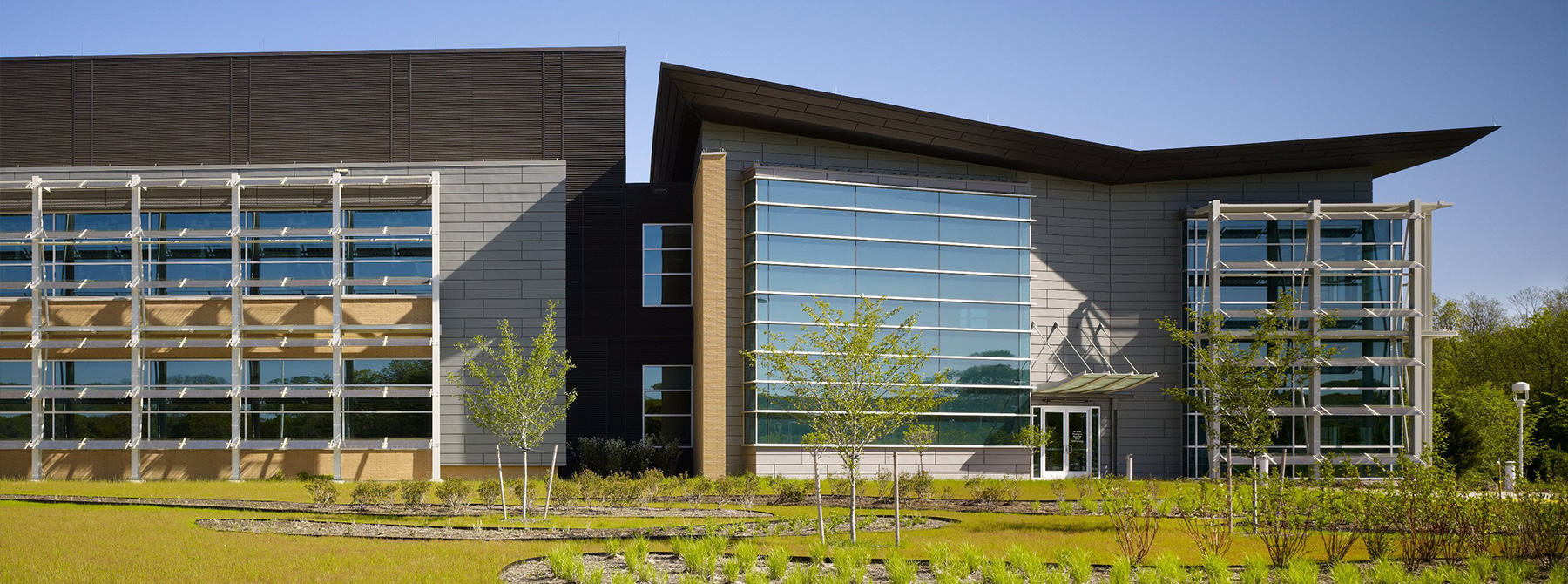How to Select the Right Sustainability Certification

WELL Certified // Kilroy Realty Corporation The Exchange at Sixteenth Street
The 1990 creation of the Building Research Establishment Environmental Assessment Method in England, and LEED (Leadership in Energy and Environmental Design) in the United States in 1993 were far from the last word in certification systems for sustainable buildings. Currently, LEED, Living Building Challenge, and the WELL Design Standard exist as three related standards, with each having evolved with strong awareness of the prior systems.
Does it make sense to support multiple certification systems? How do architects recommend the right one to building owners?

Targeting LEED Gold // Seattle Children's Research Institute, Building Cure
Background on the Certification SystemsAfter LEED's initial development, the U.S. Green Building Council (USGBC) sought to globalize, standardize, and open source this rating system to promote sustainability in construction and design. LEED remains the foundation of most sustainable design systems around the world and is considered the standard that most clients consider. It is good to remember that it promoted a quality control process with external reviews of AE designs.
The 2009 Living Building Challenge standard was developed in the Pacific Northwest based on studies that the Hewlett Packard Foundation had performed with architects BNIM to develop a "truly" sustainable building that would use zero as a standard environmental footprint. It relied on net zero energy and water, a materials red list, and some expanded humanistic and artistic criteria. Some of these ideas are being incorporated step by step into LEED, one of them being an expanded reporting and product declaration on materials use.
The WELL Building Standard, formalized by the International WELL Building Institute in 2013, redirected the focus of sustainable design to the health concerns of building occupants (in most cases these will be employees) and the environment around the project. WELL attempts to set standards based on scientific studies for building design performance such as lighting and air quality, but also takes new behavioral criteria into consideration, such as promoting healthy eating and exercise to the occupants. It is interesting how WELL has partnered with USGBC to leverage the certification reviewers established at the U.S. Green Building Council Institute, established in 2008.
The International Living Building Institute, which manages the Living Building Challenge, has maintained a separate track in line with their more ambitious goals for their system. This has also allowed them to develop more achievable ratings after realizing that their rating system was too hard to implement, except for unique or small projects.

The diagram exposes overlapping criteria and focus between the three discussed rating systems.
The ultimate choice of a sustainability standard should reflect the values the owners incorporate in their design and corporate culture. It is also important to consider that LEED is basically a building design performance tool, while WELL starts impacting human resource management in workplace design, in addition to design criteria. This follows the trajectory of adding new evaluation areas to the systems toward a holistic built environment evaluation that incorporates not just reducing our carbon and environmental footprint, but also improving human well-being and productivity.
As you facilitate decision making around these certification systems, it is important and helpful to consider their original goals and evolution. Cost is increasingly influencing the decision about which system to select. But at the same time, owners are becoming more aware of the health challenges our building occupants face every day and are supporting a more conscious lifestyle, while creating an inclusive work culture that enhances our work life.
In any case, it pays to learn more about these systems so we can improve our design. Evidence-based design is the reason we use metrics and rating systems to support the decision-making process we present to our clients.

LEED NC-Platinum // Stony Brook University, Advanced Energy Center